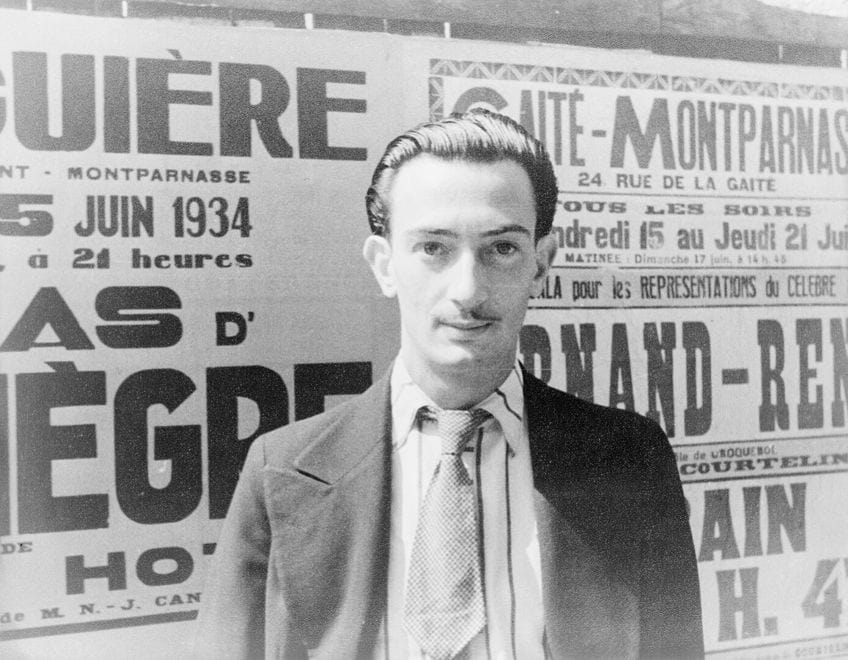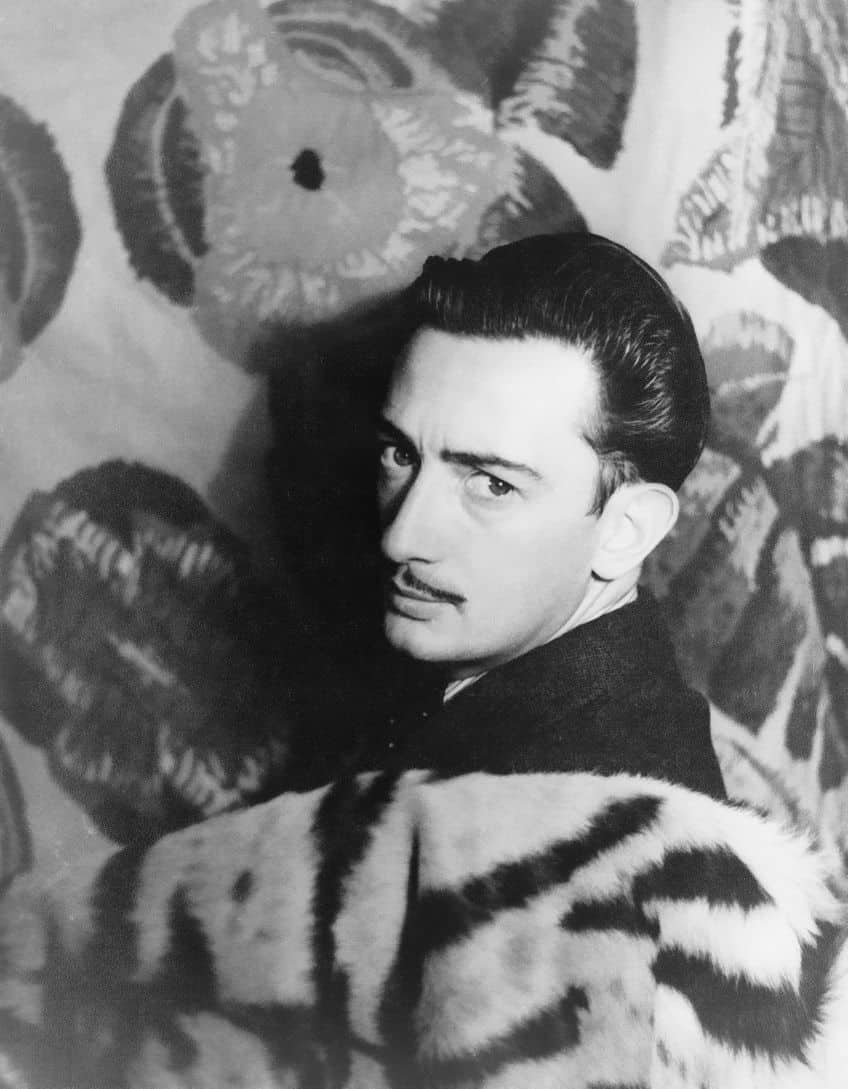“The Burning Giraffe” by Salvador Dalí – A Detailed Analysis
The Burning Giraffe by Salvador Dalí is an oil on panel painting and is housed at the Kunstmuseum Basel in Switzerland. The Burning Giraffe painting was produced before the artist went into exile in the United States. While Dalí usually claimed that his art was not political in nature, this work is said to portray the struggles that were occurring in his home country. To find out more about The Burning Giraffe meaning, read on below!
Understanding The Burning Giraffe by Salvador Dalí
| Artist | Salvador Dalí (1904 – 1989) |
| Date Completed | 1937 |
| Medium | Oil on panel |
| Dimensions (cm) | 35 x 27 |
| Current Location | Kunstmuseum Basel, Basel, Switzerland |
The Burning Giraffe painting is a synthesis of ideas that resulted from Sigmund Freud’s psychoanalysis and the Spanish Civil War. It features a burning giraffe and a woman with various drawers in her body. It was produced by arguably the Surrealist movement’s most renowned member, Salvador Dalí. Before we move on to The Burning Giraffe meaning, let us first introduce the artist, Salvador Dalí.
Salvador Dalí (1904 – 1989)
| Artist Full Name | Salvador Domingo Felipe Jacinto Dalí i Domènech |
| Nationality | Spanish |
| Date of Birth | 11 May 1904 |
| Date of Death | 23 January 1989 |
| Place of Birth | Figueres, Catalonia, Spain |
Salvador Dalí dedicated most of his career to self-promotion and attempted to consistently shock the mainstream world. He liked captivating the public imagination, and he was arguably more well-known than any other 20th-century artist, particularly in America. It was perhaps inevitable that the artist would eventually be drawn to the concepts of the Surrealists in France, as they were attempting to adapt Sigmund Freud’s new psychoanalytic theories to art and literature. Salvador Dalí was already very aware of Freud and his views on sexual repression manifesting itself in delusions and dreams, and he was intrigued by the Surrealists’ efforts to express these dreams in art.
Alongside Freudian imagery, he employed many of his own symbols, each with a unique meaning for him personally. World War II altered the artist’s perception of art.
He developed an obsession with physicist Werner Karl Heisenberg, head of the scientists from Germany who failed to produce an atomic bomb, much as he had previously been with Freud. The artist’s popularity remained consistent throughout his life. The town of Figueres established the Dalí Theater Museum in 1974, when the artist was 70 years of age, with a collection of works contributed by the artist himself. When he passed away on the 23rd of January 1989, he was buried in the Theater Museum.

Salvador Dalí’s artistic abilities went beyond just painting. He also experimented with photography, sculpture, video, and even fashion, imprinting his mark on a wide range of art forms. Yet, it was his Surrealist artworks that he was arguably most well known for. While many of the Surrealists had grown increasingly involved in socialist politics, the artist remained ambiguous about the connection between art and politics. Yet, in some works, such as The Burning Giraffe painting, we do get some insight into his political views. Let’s find out more about the painting and his views below.
The Burning Giraffe Influences
The Spanish Civil War and Freud’s ideas on psychoanalysis are believed to be the two biggest influences on this artwork. The Civil War of 1937, and the ensuing political upheavals in Spain, compelled the artist to flee to America in exile. Salvador Dalí always professed to be apolitical, yet the artwork openly depicted the devastation of war. In fact, the artwork represents a foreshadowing of impending war. When he was in Vienna, he witnessed Hitler’s thoughts on his nation and others and predicted that horrific events were just on the horizon.
His prediction eventually proved right, as two World Wars subsequently happened, killing millions.

Then there was the influence of Freud. His discoveries on dreams and the subconscious influenced practically all of his peers and successors. Salvador Dalí believed that Freud gave modern society a chance through psychoanalysis to learn everything there was to know about the mind, something the ancient Greeks did not have. Whereas the ancient Greeks achieved much in philosophy, art, and science through the Neoplatonic method, he believed that psychoanalysis could introduce even more clarity into the world.
The Burning Giraffe Meaning
The scene takes place in a twilight setting with a beautiful blue sky. In the foreground of the painting, we can see two feminine figures, one of whom has drawers extending from her side. The chest of drawers is a metaphor for Sigmund Freud’s psychoanalytic concepts. According to the artist, the blue female with the drawers in her body is called a “tailbone woman”, and these drawers represent our inner, subconscious selves. The Tailbone Woman may represent decreasing human ideals, female oppression, and the Earth’s depletion.
These drawers are open because this woman has put in the effort to discover her internal power and strength.
There are two beings present in the artwork and both are propped up by crutch-like objects. The crutches in this image are unmistakably masculine in character, depicting a patriarchal society without which some felt women would be powerless. They are phallic in nature, indicating masculine domination over feminine bodies. The nearest being’s face, forearms, and hands are peeled down to the muscle tissue underneath the skin. The muscular tissue element might be interpreted as symbolizing someone who is naked and unprotected. The other being seems to be holding a bit of meat in her hand. Raw meat is considered a call to return to our primal nature, to reclaim one’s inner self. The face resembles polished stone, with no eyes, nose, ears, or mouth, leaving the individual utterly defenseless in the event of danger.

The giraffe represents a masculine cosmic creature of the apocalypse that features in his other paintings as well. It serves as a reminder to the world about the dangers of war. The only chance for mankind is that psychoanalysis – unlocking the hidden drawers inside of our minds to grasp the mysteries of the human body, which is a blend of feminine and masculine features – may save it. The main figure has several chests of drawers hence why she needs fewer crutches. She only needs three crutches, implying that she is not as constrained by accepted standards of reality as others. But the second figure has numerous crutches but no drawers, rendering her helpless without patriarchal support.
That completes our look at The Burning Giraffe by Salvador Dalí. The artist always claimed that he did not like to mix politics into this art, yet in The Burning Giraffe painting, he has inserted a few clues as to what his political feelings were at the time the work was produced. Not only was this the era of the Spanish Civil War, but also a time just preceding the world wars, which the artist seems to have been warning us about. Not only does the painting include references to war, but also to femininity and Freudian psychoanalysis. In the artwork, we can see two female figures and each represents a different stage of the individual’s development, with one representing a person who has dealt with their subconscious issues and another who still is heavily reliant on the patriarchy. The female in front relies on fewer crutches, as her drawers are open and released of their unconscious contents.
Frequently Asked Questions
What Was the Inspiration Behind The Burning Giraffe by Salvador Dalí?
This famous giraffe painting by the Surrealist artist Salvador Dalí was said to have been influenced by several factors. One of these factors was the ever-present threat of war, as represented by the burning giraffe in the painting. Dalí was living during a time of great upheaval, not only in his own country, but also across the world. He was dealing with the effects of the Spanish Civil War, as well as the possibilities of a world war. The painting was also heavily influenced by the concepts of Sigmund Freud. These concepts were represented by the drawers and crutches that are present in the painting. The painting was also influenced by the way women were perceived in society at the time, which included the idea that they were helpless without the aid of men.
What Is The Burning Giraffe Meaning?
This famous painting has been interpreted in several different ways. It has been described as a warning about the effects of war, and has also been viewed as an allegorical representation of Sigmund Freud’s ideas about the unconscious mind. In the artwork, we can see two figures, both of whom are propped up by crutches. The figure in the front has many drawers in her side, which represent an unconscious mind free of its contents. This figure needs fewer crutches as she is more empowered. The other figure does not have any open drawers and she, therefore, requires more crutches to keep herself from falling down. These crutches are believed to represent the patriarchy, and therefore symbolize how women were thought to be completely unable to look after themselves without help from men.
Jordan Anthony is a Cape Town-based film photographer, curator, and arts writer. She holds a Bachelor of Art in Fine Arts from the University of the Witwatersrand, Johannesburg, where she explored themes like healing, identity, dreams, and intuitive creation in her Contemporary art practice. Jordan has collaborated with various local art institutions, including the KZNSA Gallery in Durban, the Turbine Art Fair, and the Wits Art Museum. Her photography focuses on abstract color manipulations, portraiture, candid shots, and urban landscapes. She’s intrigued by philosophy, memory, and esotericism, drawing inspiration from Surrealism, Fluxus, and ancient civilizations, as well as childhood influences and found objects. Jordan is working for artfilemagazine since 2022 and writes blog posts about art history and photography.
Learn more about Jordan Anthony and about us.
Cite this Article
Jordan, Anthony, ““The Burning Giraffe” by Salvador Dalí – A Detailed Analysis.” artfilemagazine – Your Online Art Source. December 5, 2023. URL: https://artfilemagazine.com/the-burning-giraffe-by-salvador-dali/
Anthony, J. (2023, 5 December). “The Burning Giraffe” by Salvador Dalí – A Detailed Analysis. artfilemagazine – Your Online Art Source. https://artfilemagazine.com/the-burning-giraffe-by-salvador-dali/
Anthony, Jordan. ““The Burning Giraffe” by Salvador Dalí – A Detailed Analysis.” artfilemagazine – Your Online Art Source, December 5, 2023. https://artfilemagazine.com/the-burning-giraffe-by-salvador-dali/.



